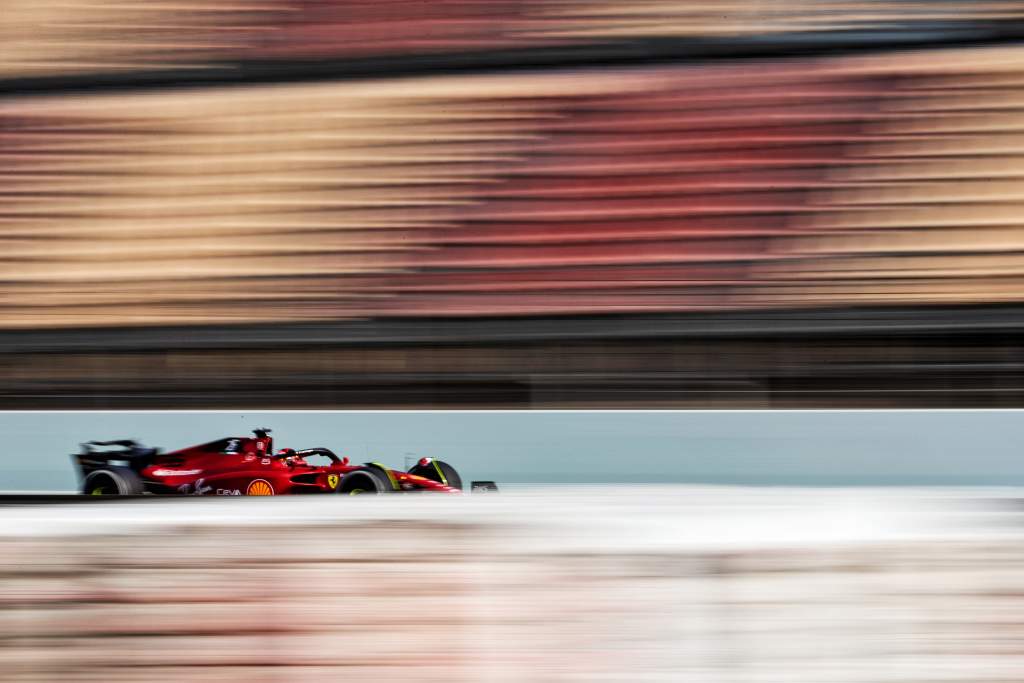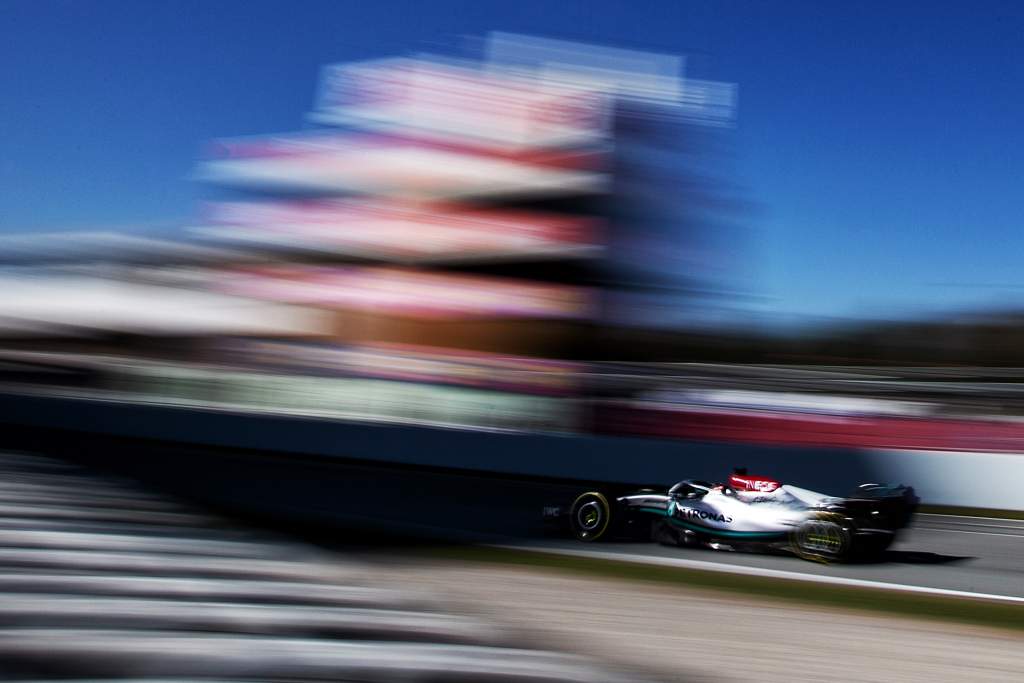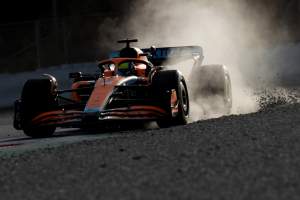Up Next

Grand Prix Drivers Association director George Russell says some of the car porpoising seen in Formula 1 testing would be a “safety concern” if it goes unaddressed.
The ground-effect aerodynamics on the new generation cars are so powerful that they suck the car close to the ground, with the effect most potent approaching maximum speed and load.
This means the floor gets too close to the ground for the airflow, the underfloor aero breaks down and downforce is lost, so the car is released and the ride height increases again – leading to the phenomenon repeating itself.
That has prompted images of cars bobbing up and down on their suspension towards the end of the start-finish straight at Barcelona, with some footage of Charles Leclerc’s Ferrari showing a particularly dramatic version of the effect – known as porpoising.
Bumpy road to the top for Charles Leclerc! 🤕#F1 pic.twitter.com/Z6a5e6d3bo
— Formula 1 (@F1) February 24, 2022
Mercedes driver Russell said this is one of the factors contributing to a “really intriguing” pre-season test, where this phenomenon has surprised teams as they could not simulate it in advance.

“We didn’t experience it too much for one reason or another,” said Russell.
“It’s not very pleasant at all and from what I’ve seen from other teams in particular it would be a safety concern.
“That does need to be sorted one way or another. But there’s a lot of intelligent people up and down this grid and I’m sure everybody will get on top of it sooner than later.”
Earlier on Thursday Ferrari F1 team principal Mattia Binotto said the issue had been “underestimated”.
It is a difficult performance balance for the teams to strike as the main way to resolve it is to boost the car’s ride height and prevent it getting low enough to suffer from the effect, but this would come at the cost of cornering performance.

“I think you could see some quite substantial issues with some of the cars in the straights and the bottoming,” said Russell.
“So this is a compromise we need to find to go quickest around the lap and it’s something I don’t think any of the teams have experienced before.
“We’re seeing some interesting things out there. That’s what testing is for.”
While it may lead to a safety concern if unaddressed, teams also have to consider the potential for damage if the car’s floor makes aggressive contact with the track surface.
Williams driver Alex Albon said that the porpoising itself “doesn’t really affect laptime that much so as long as it’s not damaging the car, you can kind of deal with it”.

He also admitted that the movement down the start-finish straight “makes Turn 1 a little bit more interesting” on the approach.
Ferrari’s Carlos Sainz said that the extent it is impacting teams depends on car design, set-up, and whether the DRS is being used – the latter because opening up the rear wing reduces downforce and load, so the rear of the current runs slightly higher.
“It’s a whole new world and understanding, and we need to get on top of it because it looks like it could be a topic for this year,” said Sainz.






